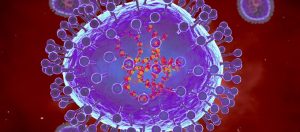The World Health Organisation (WHO) said Tuesday that the BA.2 sublineage of the omicron variant of coronavirus is not more severe than the original strain, quelling fear over its spread.
The health body has based its conclusion on samples from people of various countries. Maria Van Kerkhove, who leads the technical side of the WHO COVID response team, said, “We are not seeing a difference in severity of BA.1 compared to BA.2.”
Also Read | COVID: Omicron BA.2 should be ‘variant of concern’, says US expert. Read why
“So this is a similar level of severity as it relates to risk of hospitalisation. And this is really important, because in many countries, they’ve had a substantial amount of circulation, both of BA.1 and BA.2,” she said, according to a report by news agency AFP.
Notably, the WHO has designated three substrains of omicron (technically called B.1.1.529): BA.1, BA.2 and BA.3. Over 99% of the total omicron cases that were sequenced were of the BA.1 strain as of December 23.
As per initial data, the BA.2 variant “appears inherently more transmissible than BA.1”, the agency noted in a statement, while adding that the global circulation of all variants appears to be declining.
Also Read | One nasal droplet of coronavirus can get you infected with COVID-19: Study
The WHO said in a statement that initial data suggests the new BA2 variant “appears inherently more transmissible than BA.1,” and that further studies are ongoing to discover why this is the case.
“The Omicron variant of concern is currently the dominant variant circulating globally, accounting for nearly all sequences reported to GISAID. Omicron is made up of several sublineages, each of them being monitored by WHO and partners. Of them, the most common ones are BA.1, BA.1.1 and BA.2 (or Nextstrain clade 21L). At a global level, the proportion of reported sequences designated BA.2 has been increasing relative to BA.1 in recent weeks, however the global circulation of all variants is reportedly declining,” the WHO said in the statement from Tuesday.
Also Read | South Africa’s Afrigen makes COVID-19 vaccines using Moderna sequence
Recently, preliminary results from Japanese experiments on hamsters showed that BA.2 may have features that make it as capable of causing serious illness as older variants – including Delta, and still as evasive as old omicron cousin BA1. The study, however, is yet to be peer-reviewed.
“Although BA.2 is considered as an Omicron variant, its genomic sequence is heavily different from BA.1, which suggests that the virological characteristics of BA.2 is different from that of BA.1,” the authors noted in the research published on the preprint repository BioRxiv.
The WHO, in its statement, said that it had looked at at the Japan data and had considered real-world data on clinical severity from South Africa, the UKM and Denmark to conclude that “there was no reported difference in severity between BA.2 and BA.1”.






